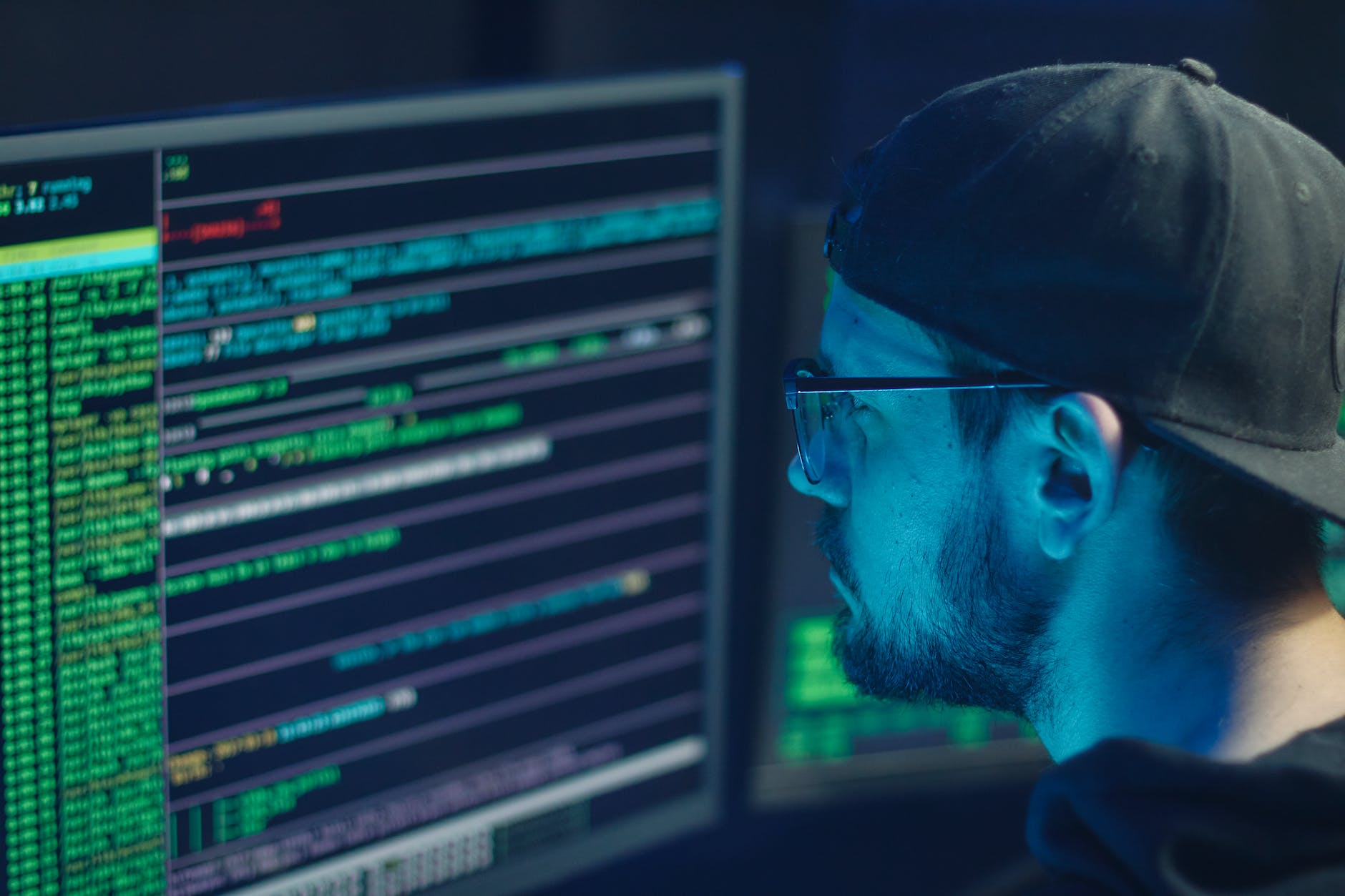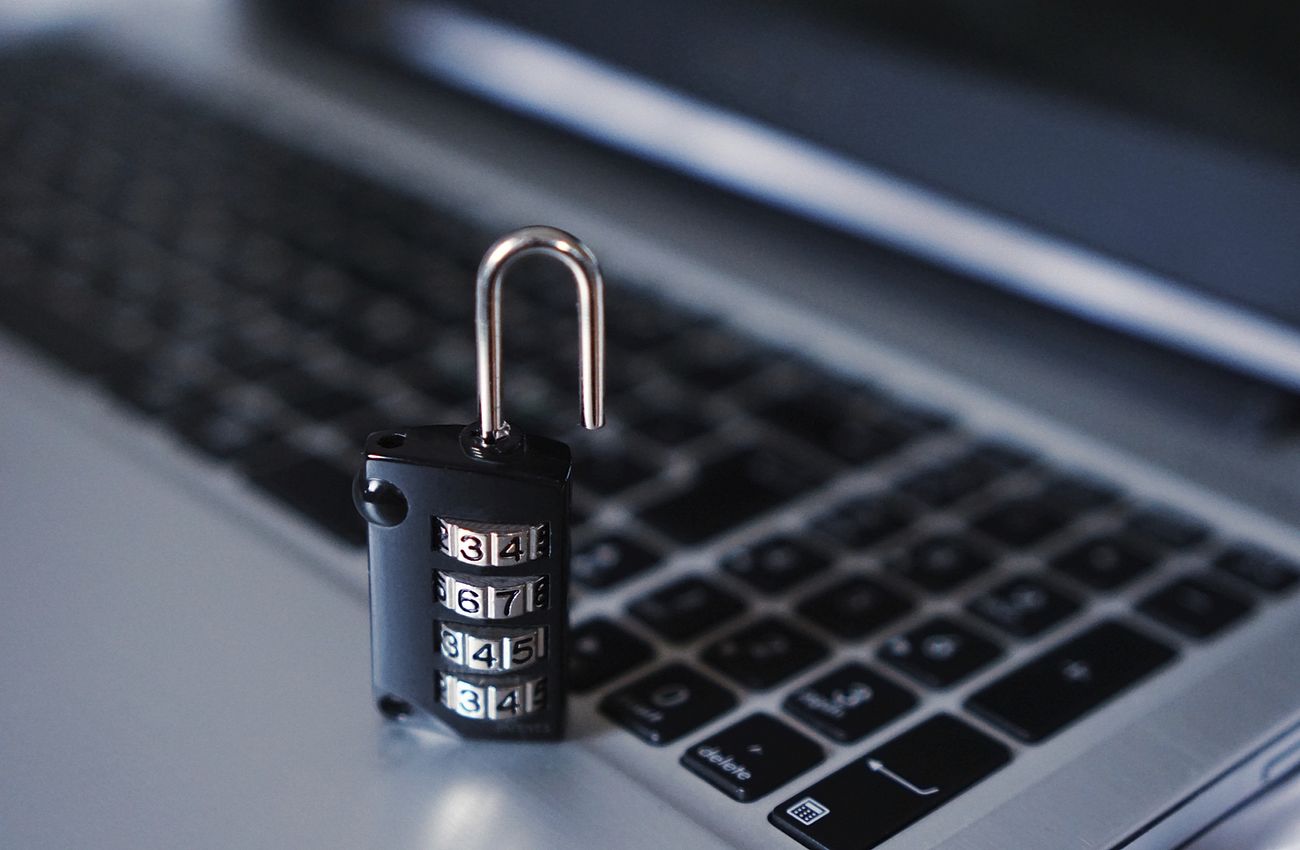Are you concerned about the growing threat of cyber-attacks? In today’s digital age, it’s crucial to prioritize cybersecurity to protect yourself, your home, your online presence, your personal information, and your work. Understanding the various types of cybersecurity is essential in developing a comprehensive defense strategy against cyber threats. From network security to data protection and online privacy, this article will explore the different facets of cybersecurity, providing you with valuable insights and knowledge to enhance your security in the digital realm.
Network Security
Firewalls
Firewalls are an essential component of network security. They act as a barrier between your internal network and the outside world, filtering incoming and outgoing network traffic based on predetermined security rules. By analyzing packets of data, firewalls can prevent unauthorized access to your network and protect your sensitive information from potential threats. Implementing a firewall not only helps to secure your network but also allows you to control and monitor network traffic, ensuring that only authorized users and devices can access your network resources.
Intrusion Detection Systems
Intrusion Detection Systems (IDS) are proactive security measures used to detect and prevent unauthorized access, misuse, or malicious activities within a network. IDS monitors network traffic, analyzes anomalies, and alerts administrators or security personnel in real time about potential threats. It helps to detect and respond to network attacks, such as unauthorized access attempts, malware infections, or suspicious patterns of behavior. By employing an IDS, you can strengthen your network security posture and significantly reduce the risk of successful cyberattacks.
Virtual Private Networks
Virtual Private Networks (VPNs) provide a secure method of connecting remote users or branch offices to a private network over a public network infrastructure, such as the Internet. By establishing an encrypted tunnel, VPNs ensure the confidentiality, integrity, and authenticity of data transmitted between devices. VPNs not only protect sensitive data from prying eyes but also create a virtual barrier that prevents unauthorized access to your network. Whether you are working from home or connecting to your office network remotely, using a VPN is a fundamental step in ensuring the security of your network communications.
Application Security
Secure Coding Practices
Secure coding practices are essential to reduce vulnerabilities in software applications. By following a set of coding guidelines and best practices, developers can minimize the chances of introducing security flaws into their applications. This includes adhering to secure coding standards, input validation techniques, and proper error handling. By adopting secure coding practices from the start, developers can build robust and secure applications that are less prone to exploitation by cybercriminals.
Web Application Firewalls
Web Application Firewalls (WAFs) are designed to filter and monitor HTTP/HTTPS traffic between web applications and the internet. They provide an additional layer of security by inspecting web traffic and detecting potential threats, such as cross-site scripting (XSS), SQL injection, or remote file inclusion attacks. By actively protecting web applications from common security vulnerabilities, WAFs help prevent the exploitation of known weaknesses or the introduction of malicious code. Implementing a WAF is an effective way to fortify your web applications and safeguard against web-based attacks.
Static Code Analysis
Static code analysis is a technique used to scan source code without executing it. By analyzing the code structure and syntax, static code analysis tools can identify potential vulnerabilities or coding errors that could lead to security issues. This proactive approach allows developers to catch security flaws early in the development process, making it easier and more cost-effective to fix them. By integrating static code analysis into the development lifecycle, organizations can ensure that their applications are more resistant to security threats and provide a safer user experience.
Cloud Security
Data Encryption and Decryption
Data encryption and decryption play a crucial role in cloud security. By encrypting sensitive information before storing it in the cloud and decrypting it only when necessary, organizations can ensure that even if unauthorized individuals gain access to the data, they cannot decipher its contents. Encryption transforms data into an unreadable format, and decryption reverses the process, making it accessible to authorized users. Leveraging strong encryption algorithms and employing robust key management practices are essential for maintaining data confidentiality and ensuring compliance with data protection regulations.
Identity and Access Management
Identity and Access Management (IAM) is a framework that enables organizations to manage and control user access to resources in the cloud. IAM systems provide authentication and authorization mechanisms, allowing administrators to grant or revoke access privileges based on predefined roles and policies. It ensures that only authorized individuals can access sensitive data or perform specific actions within the cloud environment. By implementing IAM solutions, organizations can prevent unauthorized access, protect against insider threats, and maintain a secure cloud infrastructure.
Security Monitoring
Security monitoring in the cloud involves continuously monitoring and analyzing system logs, network traffic, and user activities to detect and respond to potential security incidents promptly. By leveraging cloud-native security monitoring tools, organizations can gain real-time visibility into their cloud environments, identifying abnormal or malicious behavior and taking appropriate action. Security alerts and notifications can help administrators proactively address potential threats, minimize impact, and ensure the integrity and availability of critical cloud resources.
Endpoint Security
Antivirus Software
Antivirus software, also known as anti-malware software, is a fundamental component of endpoint security. It plays a crucial role in protecting devices, such as desktops, laptops, or smartphones, from malicious software threats, including viruses, worms, trojans, and ransomware. Antivirus software scans files and programs on endpoints for known malware signatures or suspicious behavior, actively monitoring and neutralizing threats in real time. By keeping antivirus software up to date and regularly scanning devices, you can significantly enhance the security of your endpoints and minimize the risk of infection.
Host-based Intrusion Detection/Prevention Systems
Host-based Intrusion Detection/Prevention Systems (HIDS/HIPS) are security solutions installed directly on individual endpoints to detect and prevent unauthorized activities or attacks. HIDS monitors and analyzes system events, logs, and processes to identify indicators of compromise or malicious behavior. HIPS, on the other hand, is designed to actively block and prevent suspicious activities from occurring. HIDS/HIPS can detect file modifications, unauthorized access attempts, or abnormal network connections on endpoints, providing an additional layer of protection against advanced threats.
Data Loss Prevention
Data Loss Prevention (DLP) refers to a set of policies and technologies designed to prevent the unauthorized disclosure or leakage of sensitive information. DLP solutions help organizations identify and protect sensitive data, whether it is being stored, transmitted, or used on endpoints. By implementing DLP mechanisms, such as content-based scanning, encryption, or access controls, organizations can mitigate the risk of data breaches and ensure compliance with data protection regulations. DLP solutions play a significant role in safeguarding intellectual property, customer data, and other confidential information from accidental or intentional disclosure.

Data Security
Encryption
Encryption is a critical data security measure used to protect information from unauthorized access or tampering. By converting data into an unreadable format using encryption algorithms and encryption keys, organizations can ensure that only authorized individuals with the corresponding decryption keys can access or decipher the data. Encryption is especially important when sensitive data is stored, transmitted, or shared with third parties, providing an additional layer of protection against potential cyber threats. Implementing encryption policies and leveraging strong encryption algorithms are essential practices for maintaining data confidentiality.
Access Controls
Access controls are mechanisms used to regulate and manage user access to data. By implementing access control policies, organizations can define who can access data, what actions they can perform, and under what circumstances they can access it. Access controls can be implemented through user authentication methods, such as passwords, biometrics, or two-factor authentication, and authorization mechanisms, such as role-based access control (RBAC) or attribute-based access control (ABAC). By enforcing access controls, organizations can ensure that only authorized individuals can access and manipulate data, minimizing the risk of unauthorized disclosure or modification.
Data Backup and Recovery
Data backup and recovery is a crucial component of data security and business continuity. By regularly backing up critical data and storing it in secure locations, organizations can protect against data loss due to hardware failures, natural disasters, or cyberattacks. Data backups provide redundancy and ensure that even if data becomes compromised or unavailable, it can be restored from a previous point in time. Additionally, having well-defined data recovery processes and conducting regular recovery testing helps organizations minimize downtime and mitigate the impact of any potential data breaches or disruptions.
Mobile Security
Mobile Device Management
Mobile Device Management (MDM) encompasses the processes and technologies used to manage and secure mobile devices within an organization. MDM solutions enable administrators to enforce security policies, remotely manage devices, and control access to sensitive data. By implementing MDM, organizations can ensure that mobile devices are properly configured, protected with strong passwords or biometric authentication, and have access to necessary security updates. MDM solutions also enable organizations to remotely wipe lost or stolen devices to prevent unauthorized access to sensitive information.
Biometric Authentication
Biometric authentication is an increasingly popular security measure used to verify the identity of individuals accessing mobile devices. Biometric data, such as fingerprints, facial features, or iris patterns, is unique to each individual and serves as a secure method of authentication. By leveraging biometric authentication technologies, organizations can enhance the security of mobile devices, reducing the reliance on traditional, potentially vulnerable, authentication methods like passwords. Biometric authentication provides a convenient and secure way to ensure that only authorized users can access sensitive data on mobile devices.
App Permissions
App permissions are the privileges granted by users to mobile applications to access certain features, functions, or data on their devices. App permissions help users control and manage the level of access apps have to their personal or sensitive information. By reviewing and granting app permissions carefully, users can protect their data from potential misuse or unauthorized access. It is essential to regularly review app permissions, especially when installing new apps, to ensure that apps only have access to the necessary information and functions, minimizing the risk of data breaches or privacy violations.

Internet of Things (IoT) Security
Authentication and Authorization
Authentication and authorization are crucial aspects of IoT security. Authenticating IoT devices ensures that only authorized and legitimate devices can interact with the network or other devices. Authorization mechanisms provide a way to control the actions and functionalities a device can access or perform within the IoT ecosystem. By implementing robust authentication and authorization protocols, organizations can prevent unauthorized devices from accessing sensitive data or disrupting the IoT network.
Firmware Security
Firmware security is vital in safeguarding IoT devices from potential vulnerabilities and exploitation. Firmware refers to the software code or instructions embedded in IoT devices that control their functionality and behavior. By regularly updating firmware and applying security patches, organizations can address any known vulnerabilities and protect IoT devices from potential cyber threats. Implementing secure coding practices during the development of firmware and conducting regular security audits are essential in ensuring the security and integrity of IoT devices.
Privacy Control
Privacy control is a critical aspect of IoT security, as IoT devices collect and process vast amounts of personal or sensitive data. Implementing privacy control mechanisms, such as data anonymization, encryption, or consent management, can help protect individuals’ privacy and comply with data protection regulations. By giving individuals control over their data and transparently communicating any data collection or usage practices, organizations can build trust and ensure the responsible handling of data in the IoT ecosystem.
Social Engineering and User Awareness
Phishing Awareness Training
Phishing awareness training is an effective way to educate individuals about the potential risks and techniques used in phishing attacks. Phishing attacks aim to deceive users into disclosing sensitive information or performing actions that could lead to security breaches. By providing training or simulated phishing exercises, organizations can raise awareness among employees or users about common phishing tactics and teach them how to recognize and report suspicious emails or messages. Phishing awareness training empowers individuals to be more vigilant and cautious when interacting with digital communication channels.
Password Best Practices
Password best practices are essential in maintaining strong user authentication and protecting against unauthorized access to personal or corporate accounts. Using unique, complex passwords, regularly changing them, and avoiding common patterns or dictionary words are key principles to follow. Implementing two-factor authentication (2FA) or multi-factor authentication (MFA) adds an extra layer of security by requiring additional verification beyond passwords. Promoting password hygiene and educating users on password best practices is crucial in preventing password-related security incidents.
Secure Internet Browsing
Secure internet browsing practices help protect users from various online threats, such as malware infections, data breaches, or identity theft. Using secure protocols, such as HTTPS, for accessing websites encrypts data in transit, making it harder for attackers to intercept or modify. Regularly updating web browsers and operating systems ensures the latest security patches are applied, closing any known vulnerabilities. Avoiding suspicious websites, practicing caution when downloading files or clicking on links, and using ad-blocking tools can further enhance the security of internet browsing. By adopting secure browsing habits, individuals can significantly reduce the risk of exposure to online threats.

Cyber Threat Intelligence
Threat Monitoring and Analysis
Threat monitoring and analysis involve continuously monitoring networks, systems, and digital environments to detect and respond to potential security threats. This proactive approach enables the identification of anomalies, suspicious activities, or indicators of compromise, allowing organizations to take timely action and mitigate potential risks. By leveraging threat intelligence feeds, security information, and event management (SIEM) systems, or advanced analytics tools, organizations can gain valuable insights into emerging threats, vulnerabilities, or attack patterns and strengthen their security posture.
Incident Response
Incident response refers to the structured approach taken by organizations to handle and respond to security incidents. It involves identifying, containing, eradicating, and recovering from security breaches or cyberattacks. By establishing an incident response plan, organizations can outline the necessary steps and define roles and responsibilities to effectively respond to incidents. Incident response may involve investigating the root cause, preserving evidence for forensic analysis, notifying relevant stakeholders, and implementing corrective measures to prevent future incidents. Proactive incident response planning helps minimize the impact of security incidents and facilitates a swift and coordinated response.
Vulnerability Management
Vulnerability management encompasses the processes and practices used to identify, assess, prioritize, and remediate vulnerabilities in systems, applications, or networks. By conducting regular vulnerability scans, organizations can identify potential weaknesses or security gaps that could be exploited by attackers. Once vulnerabilities are identified, they can be prioritized based on their severity and the potential impact on the organization. Applying security patches, implementing security controls, or eliminating vulnerabilities through code fixes are common strategies to address identified weaknesses. By adopting a proactive and systematic approach to vulnerability management, organizations can mitigate potential risks and maintain a secure infrastructure.
Physical Security
Video Surveillance
Video surveillance is a physical security measure used to monitor and record activities in various environments, such as offices, homes, or public spaces. By deploying video surveillance systems, organizations can deter criminal activities, monitor access points, and provide evidence in case of security incidents. Video surveillance systems can be equipped with advanced features such as motion detection, facial recognition, or remote monitoring, enhancing the overall security and surveillance capabilities.
Access Control Systems
Access control systems are security mechanisms used to regulate and manage entry/access to physical spaces, such as buildings, rooms, or areas. Access control systems encompass technologies like badges, key cards, biometric authentication, or PIN codes to grant or deny access to individuals. By implementing access control systems, organizations can ensure that only authorized personnel can enter restricted areas, preventing unauthorized access or potential security breaches.
Security Alarms
Security alarms are physical security devices designed to detect and signal potential security breaches or unauthorized access attempts. Alarm systems can be installed in homes, offices, or other premises and can include sensors for motion, doors/windows opening, or glass breaking. When triggered, security alarms emit audible alerts or send notifications to security personnel, local authorities, or property owners. Security alarms are an essential deterrent against intruders and provide an added layer of protection for physical spaces.
In conclusion, cybersecurity encompasses various layers of protection to safeguard our digital and physical assets from potential threats. From network security measures like firewalls and intrusion detection systems to application-level security practices and cloud security protocols, implementing comprehensive security measures is crucial to mitigating potential risks. Endpoint security, data security, mobile security, IoT security, social engineering awareness, cyber threat intelligence, and physical security measures collectively contribute to building a robust and resilient security posture. By understanding the different types of cybersecurity and implementing appropriate security measures, individuals and organizations can protect their sensitive information, safeguard their digital operations, and ensure a safer online environment.
© 2016-2023 by LiVentures. All rights reserved. No part of this document may be reproduced or transmitted in any form or by any means, electronic, mechanical, photocopying, recording, or otherwise, without prior written permission of LiVentures.







